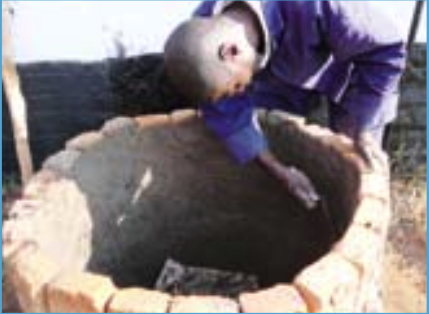Brick cement tank
| |
Brick cement tanks are a low cost option for storing water gained through water harvesting. In general it is cheaper than ferro-cement tanks and easier to build.
Design
Brick cement tanks are constructed by placing an upright ring of bricks in a circle, with 3 rings of steel wire tightened around them. If the tank diameter is bigger than 2 meters more rings are needed. A second, third and fourth ring of bricks are added and suitably tightened. Cement is then applied on the inside and outside of the brick walls and to cover the bottom. A metal or PVC outlet pipe can be installed at the bottom. Once the cement has been applied, the tank needs to be covered with paper or plastic and kept wet for 7 days to cure the cement. Another curing option is to fill it up after the second day of installation.
| Advantages | Disadvantages |
|---|---|
| Cheaper and easier to build than ferro-cement tanks |
Contents
Capacity
Volumes can be 0.5 to 30 m3.
Costs
Materials consist of (local produced) bricks (or blocks of hard rock), cement and steel wire. Approximately 1 bag of 50 kg cement per m3 tank volume. The bigger the volume of the tank, the lower the amount of materials (and thus costs) per m3 tank volume.
- Brick cement tank of 1 m3: 1 bag of cement, 100 bricks, 1 kg of wire US$ 20
- Brick cement tank of 6 m3: 3 bags of cement, 300 bricks, 3 kg of wire US$ 40
Applying conditions
Areas suitable for rainwater harvesting.
Examples and initiatives
Brick cement tanks have been constructed in Nicaragua and Ghana, among other countries.

|
Movie
- Construction www.youtube.com/watch?v=KinpClgH-IE&feature=related

